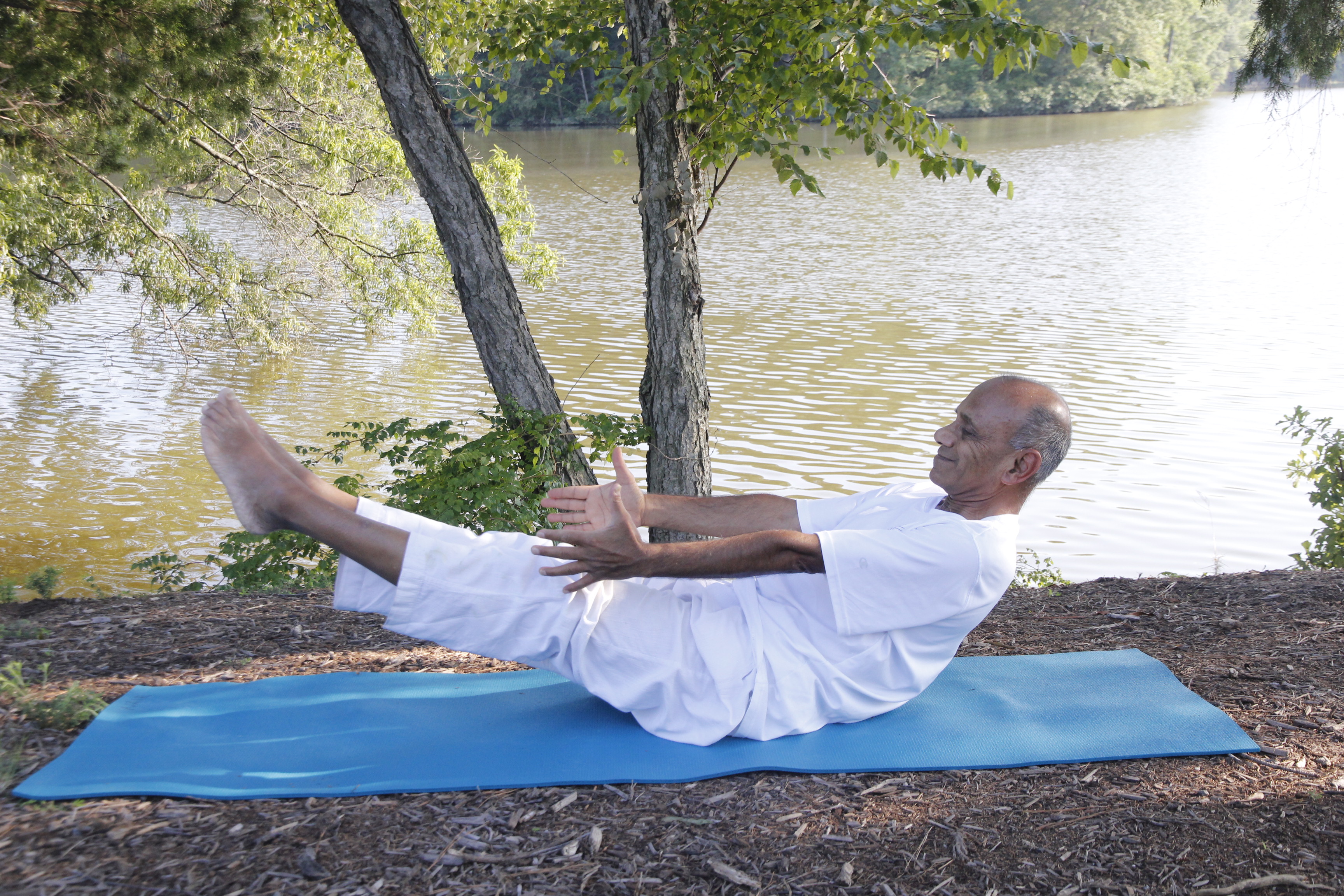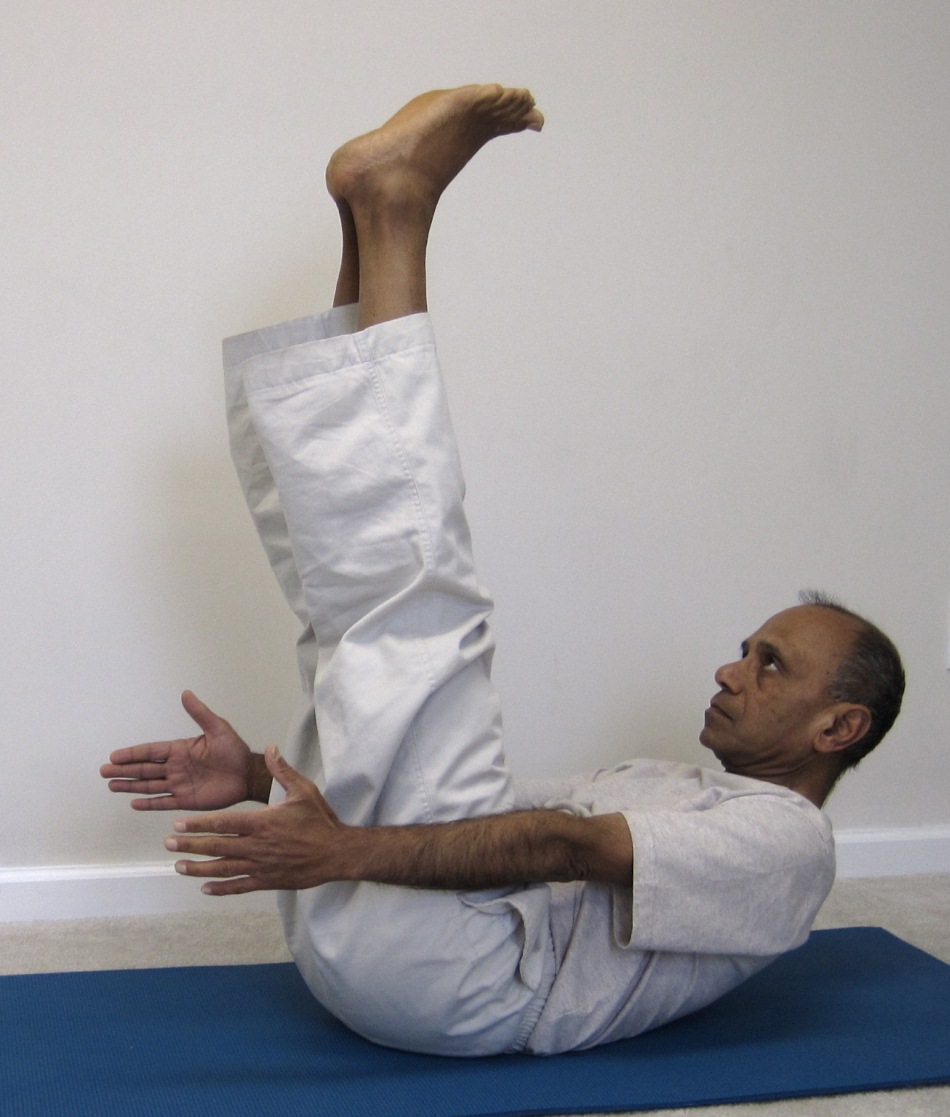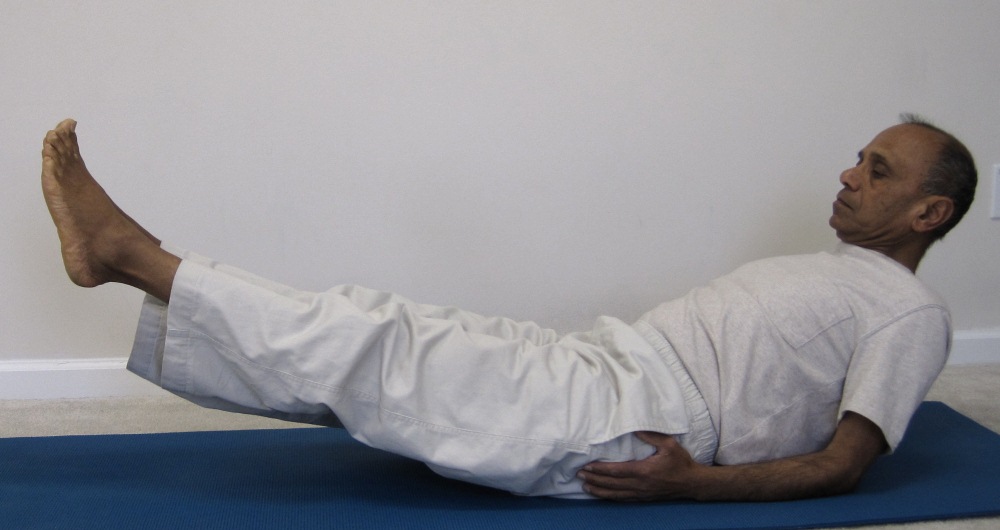Boat pose (Navasana – नावासन or Naukasana – नौकासन)
 is one of the basic poses that can be practiced to effectively build core strength (in addition to many other benefits, as given here). It is usually practiced along with some of the other poses that are practiced from the supine position – for example, the shoulder stand (sarvangasana), fish pose (matsyasana), bridge pose (setu-bandhasana) etc.
is one of the basic poses that can be practiced to effectively build core strength (in addition to many other benefits, as given here). It is usually practiced along with some of the other poses that are practiced from the supine position – for example, the shoulder stand (sarvangasana), fish pose (matsyasana), bridge pose (setu-bandhasana) etc.
I am presenting here a video of the boat pose along with some of the variations. Hope you’ll enjoy practicing with the video.
Step-by-step
You can get into the boat pose either from a seated position or from a supine position (shavasana) while you are on your back. I personally prefer to start in the supine position.
- Lie on your back in shavasana (corpse pose) and relax for a few breaths.
- Bring the feet together and arms alongside the body, palms facing each other.
- While inhaling, lift legs, arms, shoulders, head and torso off the floor. The head and the feet should be about one foot above the ground.
- Keep the palms at the level of the feet, facing each other. Hold the position for about five breaths.
- While exhaling, return back to the supine position and relax for a couple of breaths.
- Repeat the above two or three more times.
- Relax in shavasana.
Variations
Dynamic Boat Pose
This variation is commonly practiced as one of the Five Tibetan Rites. In this practice, each of the five rites is repeated 21 times.
- Lie on your back in shavasana (corpse pose) and relax for a few breaths.
- Bring the feet together and arms alongside the body, palms facing each other.
- While inhaling, lift legs, arms, shoulders, head and torso off the floor. Try to bring the legs to a vertical position while lifting the head as high as comfortable.
- Keep the palms at the level of the head, facing each other.
- While exhaling, return back to the supine position.
- Repeat the above as many times as comfortable.
- Relax in shavasana.
Supported Boat Pose
- Lie on your back in shavasana (corpse pose) and relax for a few breaths.
- Bring the feet together and arms alongside the body, palms facing each other.
- Lift the torso up into a half-seated position, resting on the elbows.
- While inhaling, lift legs off the floor bringing the feet to the same height above the floor as the head.
- Hold the position for as long as comfortable.
- While exhaling, return the legs down to the floor.
- Repeat the above a couple of times.
- Relax in shavasana.
Supported Boat Pose variation
- Lie on your back in shavasana (corpse pose) and relax for a few breaths.
- Bring the feet together and arms alongside the body, palms facing each other.
- Lift the torso up into a half-seated position, resting on the elbows.
- While inhaling, lift legs off the floor bringing the feet to the same height above the floor as the head.
- Begin to raise the right leg, without bending the knee, and try to bring the leg to a vertical position.
- Hold the position for about four breaths.
- Return the leg to its starting position (about a foot above the floor).
- Repeat the same move with the left leg.
- Finally try to raise both the legs to the vertical position while still supporting the torso on the elbows.
- Hold the position for about five breaths.
- While exhaling, return the legs down to the floor.
- Relax in shavasana
Boat Pose in preparation for Yoga Nidra
I use the boat pose to tense up every muscle in the body as preparation for Yoga Nidra. Tensing of the muscles brings a deeper sense of awareness toward every part of the body. We use this heightened awareness to relax the body during Yoga Nidra.
- Lie on your back in shavasana (corpse pose) and relax for a few breaths.
- Bring the feet together and arms alongside the body, palms facing each other.
- While inhaling, lift legs, arms, shoulders, head and torso off the floor. The head and the feet should be about one foot above the ground.
- Stretch the arms out in front. Spread the fingers wide apart and then make a tight fist with the two hands. Repeat this move of opening the palms and making a fist about five times.
- Keeping the elbows straight and the fists tight, begin to rotate the wrists around and complete six rotations in one direction. Then pause and complete six rotations of the wrists in the opposite direction.
- Now, keeping the fists tight and elbows straight, open the mouth and extend the tongue all the way out, curling it down toward the chin.
- Open the eyes wide, tense all the facial and neck muscles, pull the hands away from you, squeeze the buttocks tight, tighten the thighs, knees and knee caps, ankles by pointing the toes away from you.
- Finally, give a tight squeeze to the whole body one last time and then bring the body down to the mat to lie in shavasana for Yoga Nidra.
Energize the Boat Pose with Kapalabhati
This is a highly energizing routine and should be done by experienced yoga practitioners only who already have an ongoing practice of Kapalabhati (breath of fire).
- Bring the body into the traditional boat pose with the head and feet lifted about one foot above the ground.
- Maintaining the body in the boat pose, begin the kapalabhati breathing practice – forcefully expelling the air out through the nose in brisk, short bursts while at the same time pulling the stomach muscles in.
- Start with only ten to fifteen expulsions in the beginning. Over a period of time and with a regular practice, you may increase the number of breath expulsions in each round.
- At the end of the round, bring the body back into shavasana and relax.
Benefits
- Strengthens the core abdominal muscles, hip flexors and the spine
- Stimulates the muscular, digestive, circulatory, and hormonal systems
- Tones all the internal organs and removes lethargy
- Eliminates nervous tension and brings about a state of relaxation
- Practicing boat pose before shavasana (yoga nidra) helps bring a deeper sense of awareness of the body, thus deepening the experience of relaxation
- Practicing boat pose immediately after waking up restores freshness into the body quickly
Contraindications
- Avoid this pose in case of diarrhea, headache, heart problems, low blood pressure
- This pose should not be practiced during pregnancy
- If you have a neck injury, practice this pose with the head and shoulders resting against a wall to relieve any strain to the neck
Please provide your feedback and comments below.



[…] boat pose, as a powerful yoga asana that's extremely difficult for student for a number of different reasons, […]